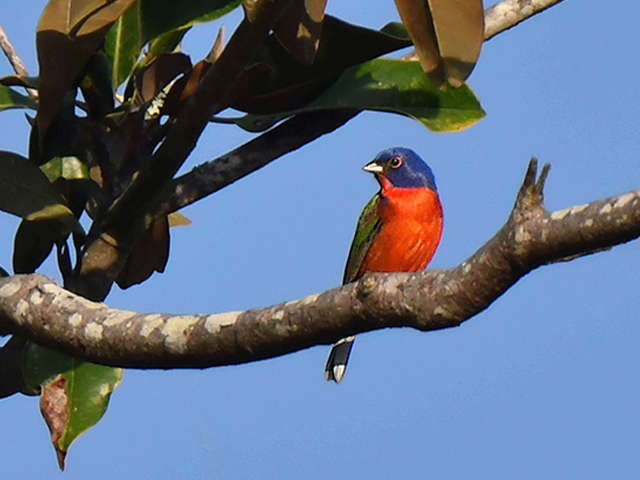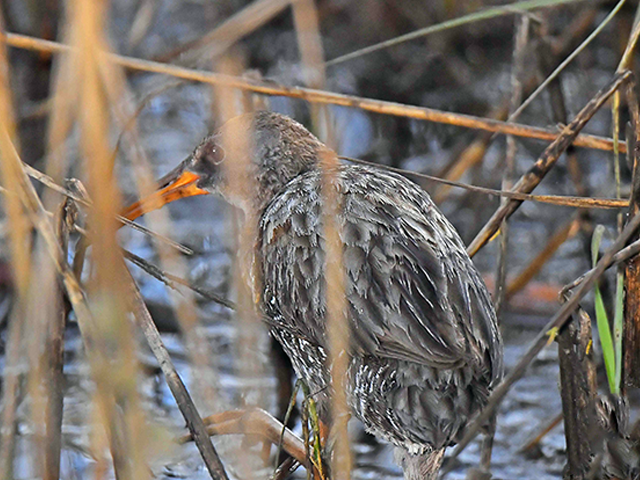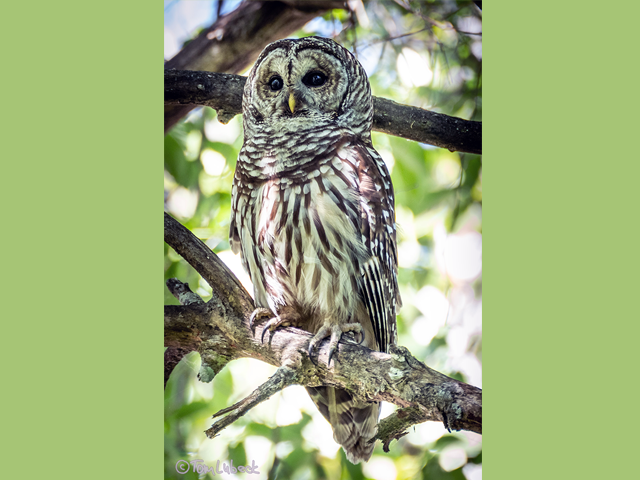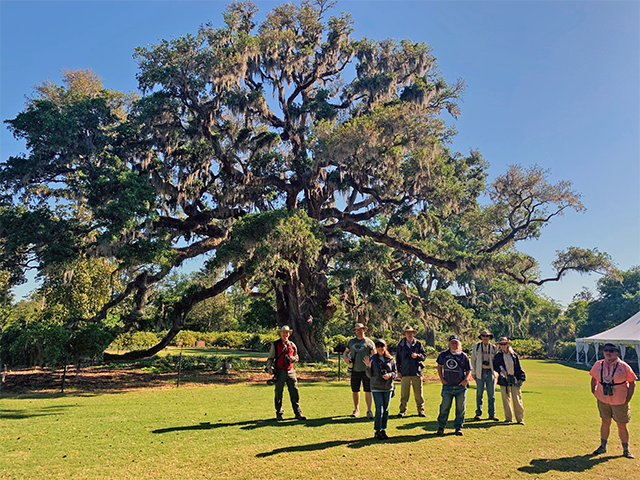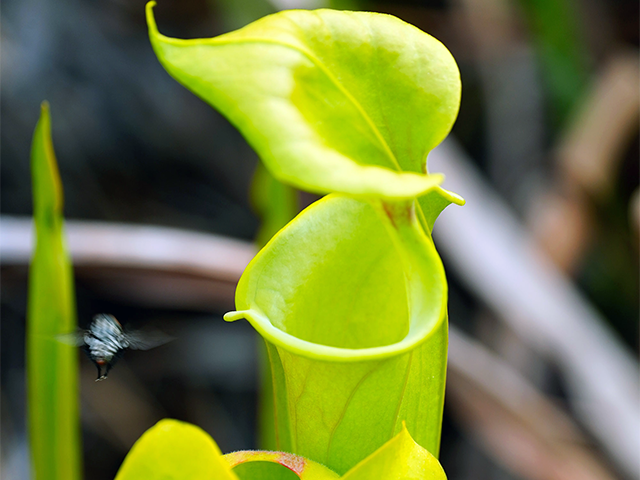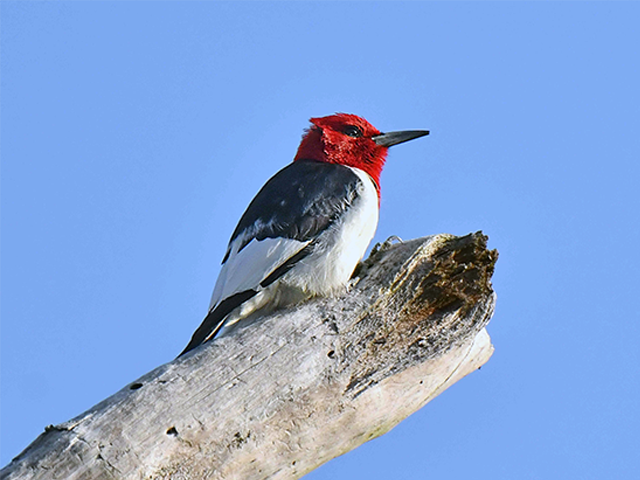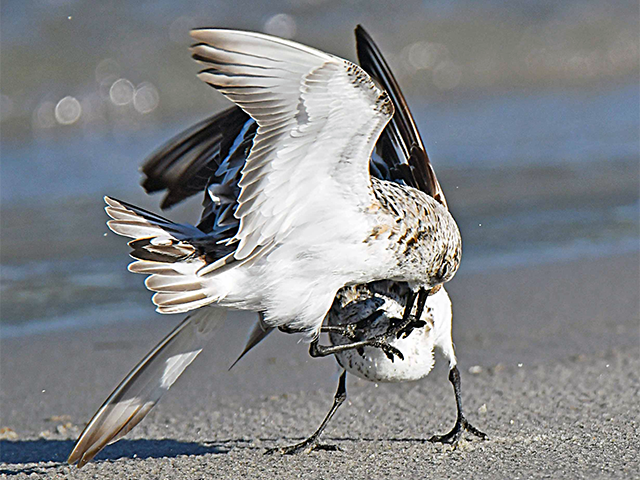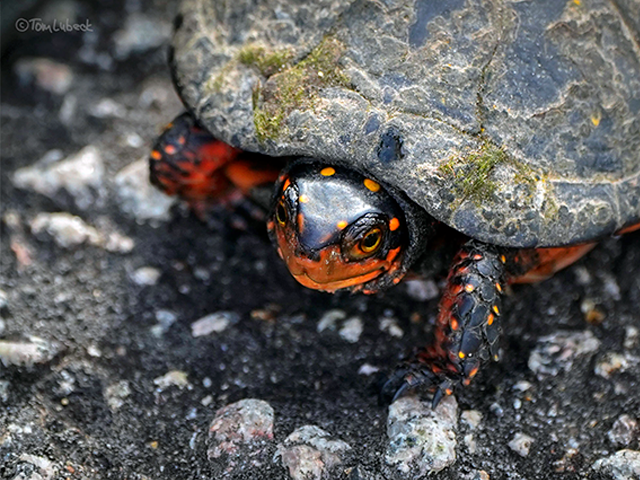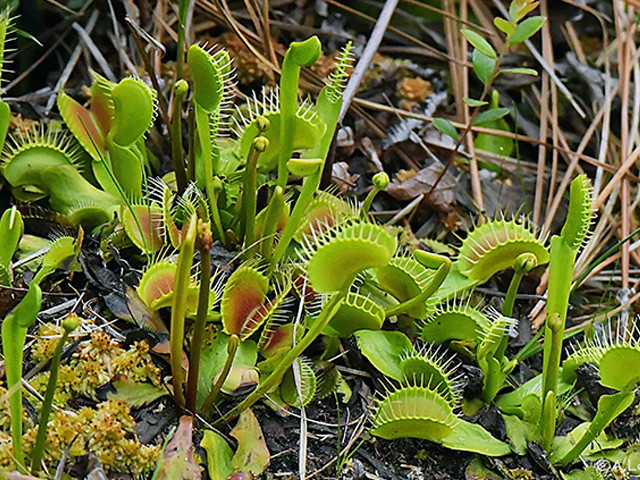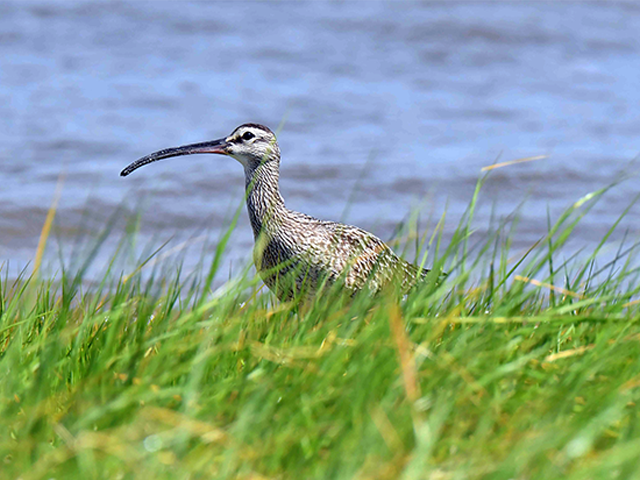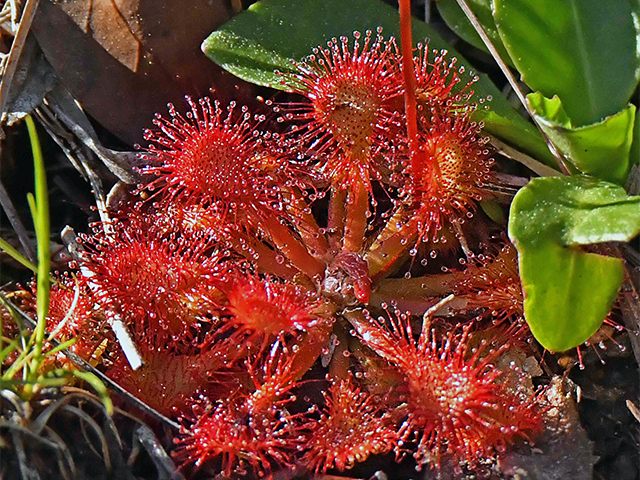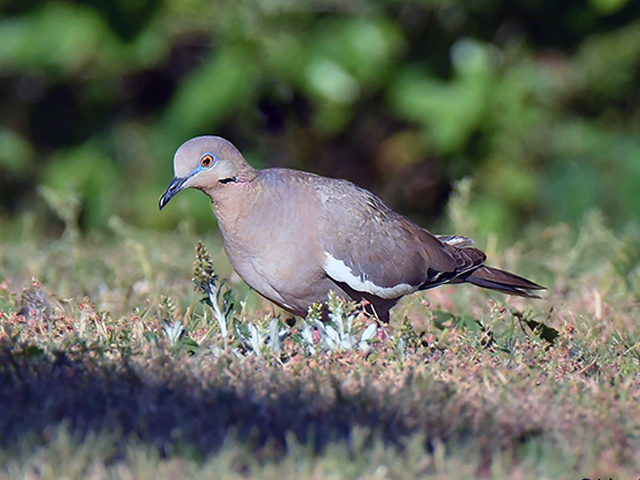Our group met in the afternoon on April 28 for what was our first ever spring Venture to the southeastern NC region. After getting everyone checked in at the hotel, we visited nearby Greenfield Lake for the trip’s first birding. The historic millpond, located just a few minutes from our hotel and downtown Wilmington, features mature bald cypress trees, a park with trails that encircle the lake, and quite a few wooden overlooks that allow for good viewing and birding opportunities. We watched Northern Rough-winged & Barn Swallows as well as Chimney Swifts, skimming the lake surface. Anhingas and Double-crested Cormorants dried their wings at their respective perches around the lake. Yellow-rumped Warblers were numerous, as were Blue-gray Gnatcatchers and Gray Catbirds. A Great Crested Flycatcher gave us great looks as it chased an insect down to the ground, within mere feet of us. Just before turning around and making our way back to the hotel and dinner, we managed to get scope views of a Yellow-throated Warbler singing in the top of a pine!
The next morning, we headed south to Carolina Beach and Fort Fisher. Our first stop was at Carolina Beach State Park, where the songs of Painted Buntings graced our ears as we stepped from the vehicle. Soon enough we had wonderful scope views of one of the males, an absurdly beautiful bird indeed! Several adult Red-headed Woodpeckers, breathtaking in their own way, vied for our attention here as well. Nearby, a male Rose-breasted Grosbeak posed at the top of a snag. A quick scan of the river turned up a whole host of 'trip birds,' from Royal Tern and Brown Pelican to Snowy Egret and Tricolored Heron. Continuing south, we then visited Fort Fisher State Recreation Area. After a short walk through coastal scrub woodland, we found ourselves alongside a nice example of salt marsh at high tide. The wind made it difficult to find any of our target 'marsh sparrows' but we enjoyed seeing Gull-billed and Caspian Terns, Glossy Ibis, Lesser Yellowlegs, and Willet among others. We found more shorebirds clustering together on the rapidly submerging jetty as the tide came in – American Oystercatcher, Black-bellied and Semipalmated Plovers, Ruddy Turnstone, Dunlin, Semipalmated and Spotted Sandpipers. A close Whimbrel also gave us great views and allowed for lots of photos. After lunch and an afternoon rest, we met up a few hours later and drove down to the Green Swamp Preserve in Brunswick County. This Nature Conservancy property is known for its excellent examples of a variety of carnivorous plants, which we had hoped to find in abundance. It only took a brief 15 min walk to get to the first patch of carnivorous plants – a cluster of Venus flytraps, right in the middle of the trail! As we continued along, we began to notice an increasing number of umbrella-like flowers of both yellow and purple varieties protruding from the grasses on either side of the trail. These were pitcher plant flowers, and this being relatively early in the season, many of the plants had not even grown 'pitchers' yet. Another few minutes along the trail and we had found sundews, beautiful but diminutive plants with paddle-shaped leaves covered with 'sticky hairs' which trap their insect prey. Butterworts were also in good number here, their blue flowers on long stalks visible through the grasses. Aside from the occasional Red-headed Woodpecker and Common Grackle, the woods here were fairly quiet on the bird front, but this was mainly a botanical outing!
In the pine savannah of Holly Shelter Game Lands on the following morning we found numerous Bachman’s Sparrows, a specialty of this habitat. We watched one through a scope for several minutes while it sang – a real treat! Expectedly we also found Pine Warbler and Brown-headed Nuthatch in no short supply, and we encountered a few pairs of the federally-endangered Red-cockaded Woodpecker, one of our main targets of the trip, throughout the game lands as well. The dirt roads through Holly Shelter go for miles and miles and while much of the area is pine savannah, there is also pocosin wetland, patches of mixed/deciduous forest, and bottomland forest and swamp along the Cape Fear River. We spent the rest of the morning birding along the roads and exploring these habitats, getting great views of Swainson’s, Pine, Prairie and Prothonotary Warblers plus Indigo Bunting. A picnic lunch at a riverside stop in Bladen County allowed us to scan the river for waders and raptors while we ate. A Purple Martin colony entertained us as they came and went from their gourds. The warm afternoon meant there were quite a few raptors soaring around – mostly Black and Turkey Vultures, although we also had Red-shouldered Hawk and Mississippi Kite. We got fleeting glimpses of an Orchard Oriole and spotted a flyby Cattle Egret before heading back to the hotel. Our nighttime search for Barn Owl this evening turned out to be unsuccessful, but watching the sunset with Northern Bobwhites calling was pleasant nonetheless.
After checkout the following morning, we drove to the south end of Wrightsville Beach to get in a bit more coastal birding before leaving town. Here, the prime nesting areas of the 'colonial waterbirds' are roped off by the local Audubon chapter to keep out beachgoers and to minimize disturbance. The birds were quite active when we arrived, with many of the male terns presenting fish to their mates. Least, Common, Sandwich, Royal, and Gull-billed Terns were all present along with numerous Black Skimmers. We spotted a lingering Common Loon in the inlet and marveled at the show of territoriality between two Sanderlings which were practically ripping out each other's feathers. A good pick-up was a distant Lesser Black-backed Gull standing on a sandbar in the intracoastal waterway. We spent the rest of our morning at Airlie Gardens, located just a few minutes inland from Wrightsville Beach, where we found a few more Painted Buntings, Blue-gray Gnatcatcher, Northern Parula, and our only American Redstart of the trip. The most exciting bird encounters of our visit though had to be standing underneath an Osprey nest while it was calling, and a finding a Barred Owl that gave us a prolonged back view before deciding to turn around and give us the front view - much to our delight of course! After a picnic lunch we continued our way north to our hotel in Morehead City where we rested for the afternoon. After dinner we took a short drive into the Croatan National Forest to listen for nightjars and owls. We arrived a few minutes before dusk, and there were still quite a few songbirds in full voice – Eastern Towhee, Great Crested Flycatcher, Eastern Kingbird, Common Yellowthroat and Pine Warbler. Right around dusk we began to hear Common Nighthawks calling, and eventually we got views of them flying just above the treetops. Just after dark we began hearing the songs of Chuck-will's-widows calling from the pine savannah, on either side of the road. Try as we might, we were unable to get visuals of these nocturnal birds, but it was still a treat to hear them. While our night was eventually cut short by the sound of explosions and military drills coming from nearby Cherry Point, the experience was worthwhile just for another great sunset but the Nighthawks and Chuck-will's-widows were a nice bonus!
Our visit to Fort Macon State Park the following morning turned out to be a fruitful one, and soon after arriving we went to check the bird feeders by the visitor center. To our surprise, a White-winged Dove was waiting for us, and we got lots of great looks and photos of it underneath the feeders. This species would be expected in parts of Texas, Florida, New Mexico, Arizona and California, but in the state of North Carolina, it is a rarity. Bird activity in general was quite high around the feeding station, and in addition to seeing the expected Cardinals, House Finches, and Common Grackles, we also had stellar views of Great Crested Flycatcher and a beautiful male Orchard Oriole, both on different occasions, in the bare branches at the top of a cedar. We continued exploring the park's trails through coastal woodland and marsh, adding quite a few new birds to our list, including Great Black-backed Gull, Field Sparrow, and Marsh Wren. Just before turning around to head back, we got really great looks at a Clapper Rail in the marsh. After a restful afternoon and an early dinner, we drove out to Cedar Island NWR to listen for rails and other marsh birds along the causeway. A few roadside stops in the area produced great views of Least Tern, Greater Yellowlegs, Red-headed Woodpecker, Willet, and Osprey. As dusk approached, we pulled off on a side road along NC-12 to scan the vast surrounding marsh. Awaiting in our headlights as we parked was an adult White-crowned Sparrow eating grass seeds, seemingly unbothered by our presence. The songs of Seaside Sparrow were buffeted by the wind sounded more distant than they were, but eventually we found one perched atop the reeds. Little Blue & Tricolored Herons glided by in the fading light, and an American Black Duck flew directly in front of what was yet another gorgeous sunset. Once it was dark, we turned our attention to listening for rails. The aforementioned wind made that a bit difficult, but we did manage to hear Clapper and Virginia Rails. The occasional scan with a flashlight turned up a pair of Black-necked Stilts, but little else, and we called it a night.
After an early departure, we drove 90 min north to the Voice of America Game Land in Beaufort County near Greenville, NC. Our main target bird this morning was Henslow's Sparrow, a rarity in much of the state but one that has nested on these lands for several decades. At least 2 were singing along the entrance road as we drove in and eventually, we got distant views of one through a scope. Blue Grosbeaks, Orchard Orioles, and Common Yellowthroats put on a show for us, constantly flying to and fro and landing in full view in the saplings, shrubs, and other low vegetation. Yellow-breasted Chats called initially from invisible perches but at last we got some excellent looks through the scope. We saw Eastern Meadowlarks and Eastern Kingbirds, Savannah Sparrow, American Goldfinch and Red-winged Blackbirds. Eventually we got even closer views of Henslow's Sparrow. An added treat was hearing both King Rail and Sora call from the roadside marsh – two last minute rail additions to our list! Just before ending the trip and dispersing to go our separate ways, we had a close encounter with a Killdeer performing the 'broken wing' display near the parking area. After enjoying a few minutes of close views and photographs, we left the Killdeer in peace and said our farewells!
Our inaugural spring Southeastern NC Hotspots finished with a total of 132 species. Aside from windy conditions while birding at the coast, the weather was thankfully just about perfect for the duration of our week together. This meant that there were fewer spring migrants stopping over and is likely the reason we did not find many. While we also missed Black Rail, we did find most of our targets for the trip in addition to a few surprises – like the White-winged Dove. Thanks as always to the participants for making yet another fun Venture possible and we look forward to more birding outings to the Wilmington area in the future.
April 28 – Arrival in Wilmington; birding at Greenfield Lake
April 29 – Carolina Beach SP & Fort Fisher; Green Swamp Preserve PM
April 30 – Holly Shelter GL in AM; Cape Fear Lock & Dam (Lunch); Burgaw in evening
May 1 – Wrightsville Beach (Masonboro Inlet); Airlie Gardens; drive to Morehead City; evening in Croatan NF
May 2 – Fort Macon SP; evening at Cedar Island NWR (causeway & boat ramp)
May 3 – early departure; AM VOA Game Land (Bear Grass VOA site)
